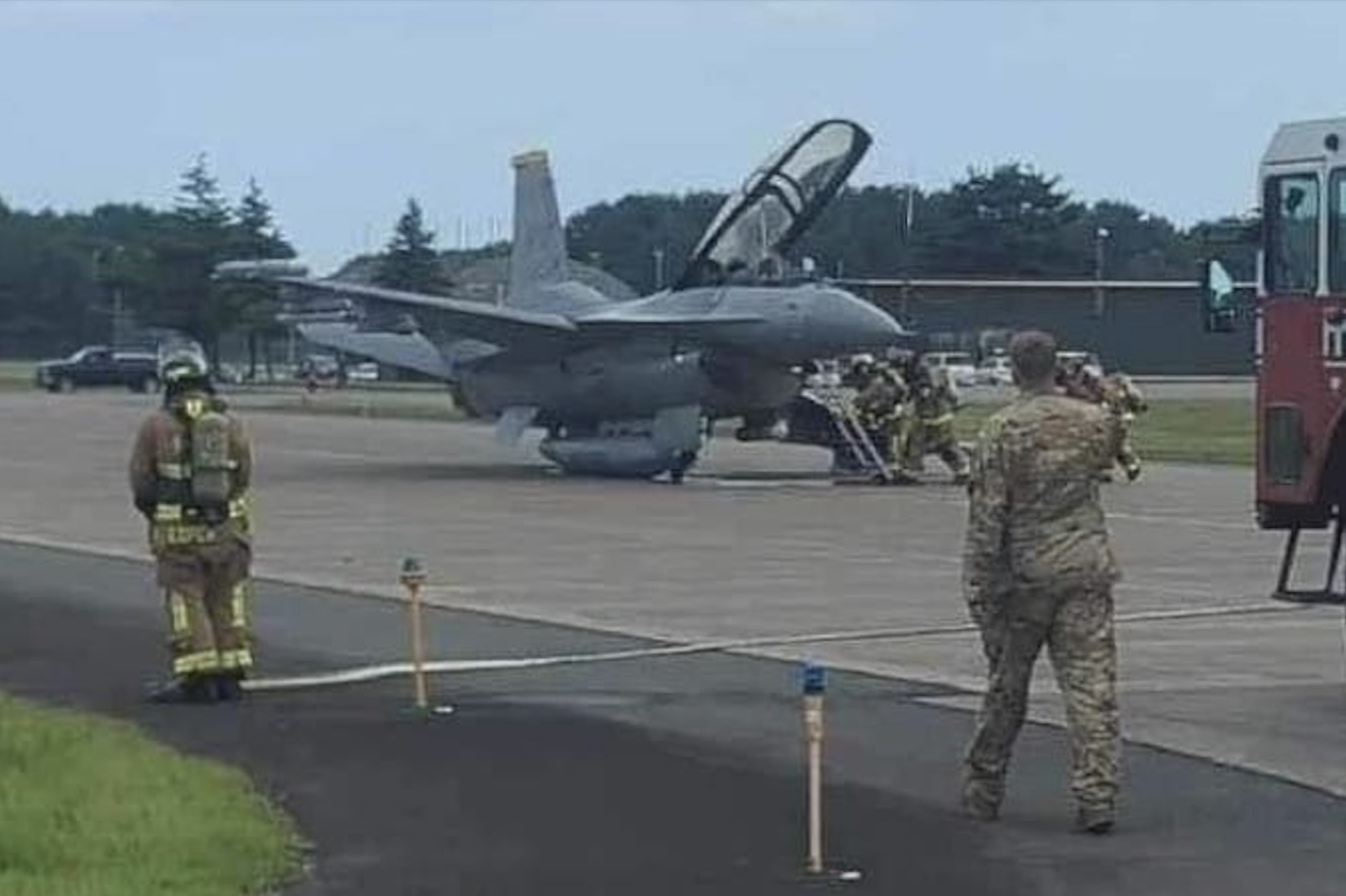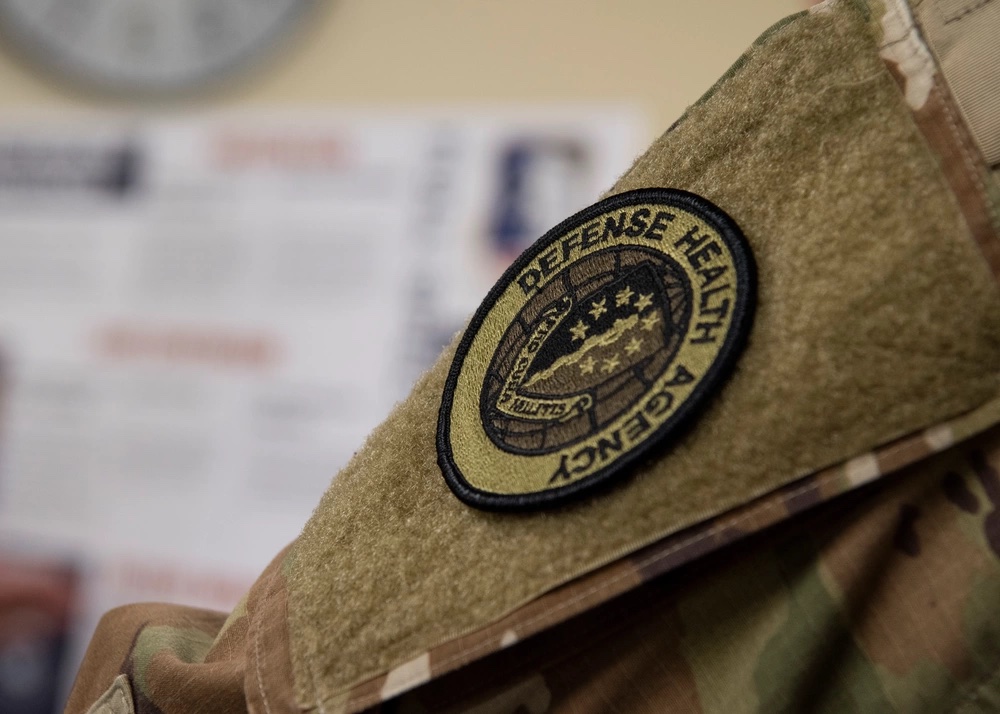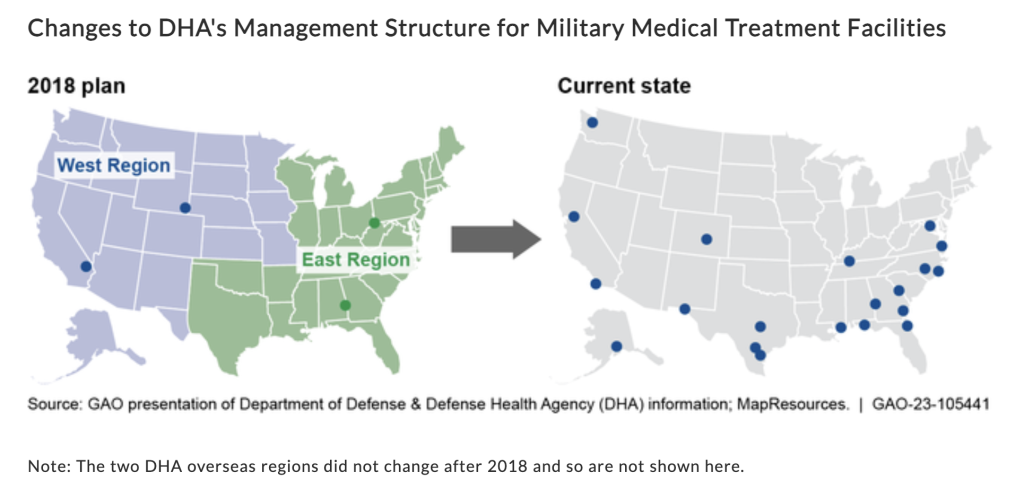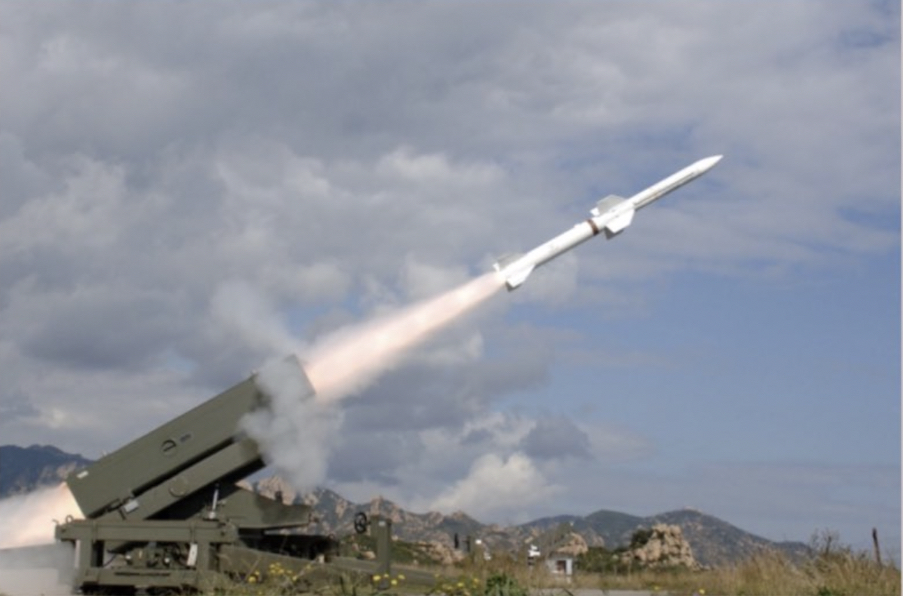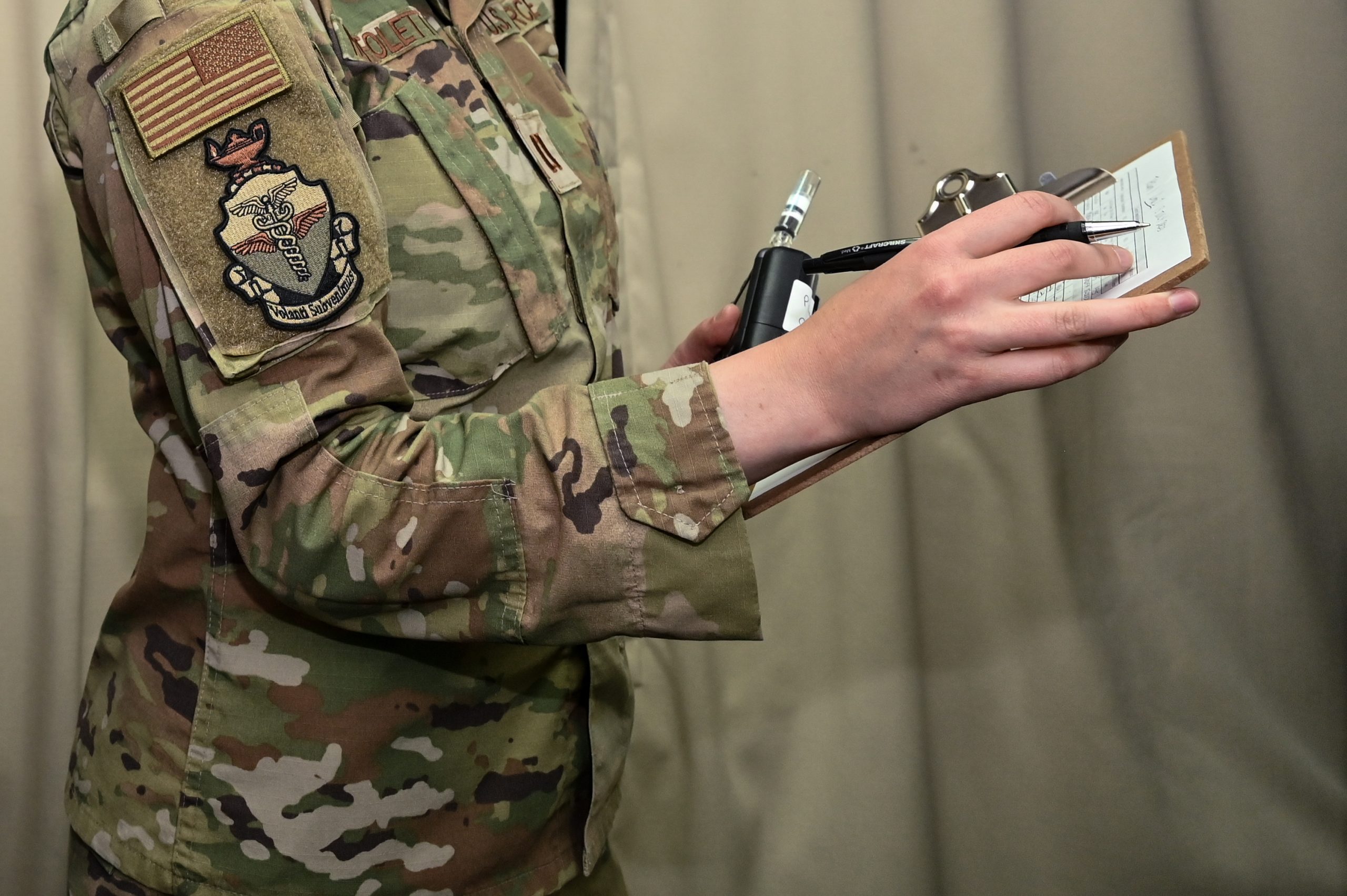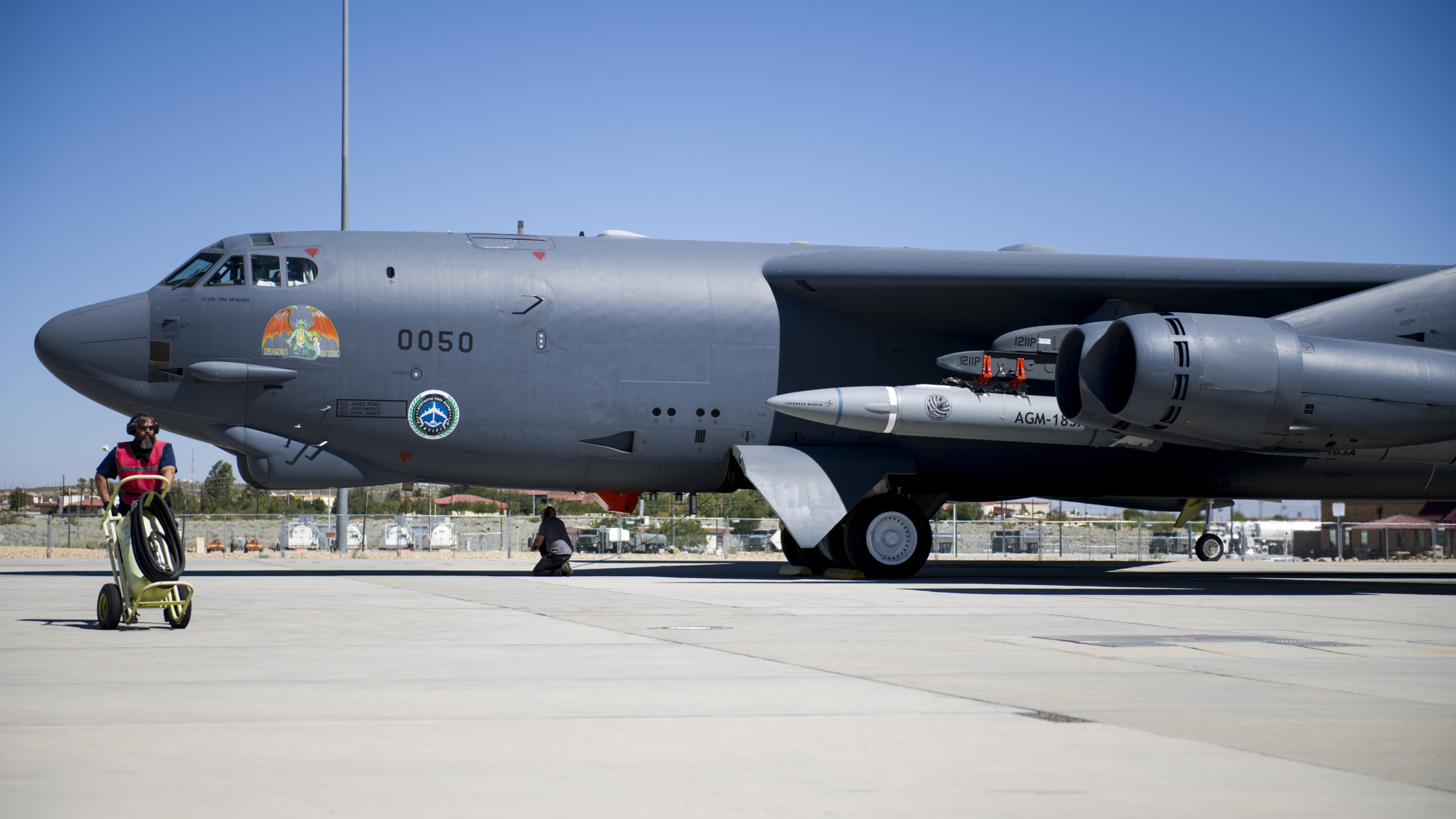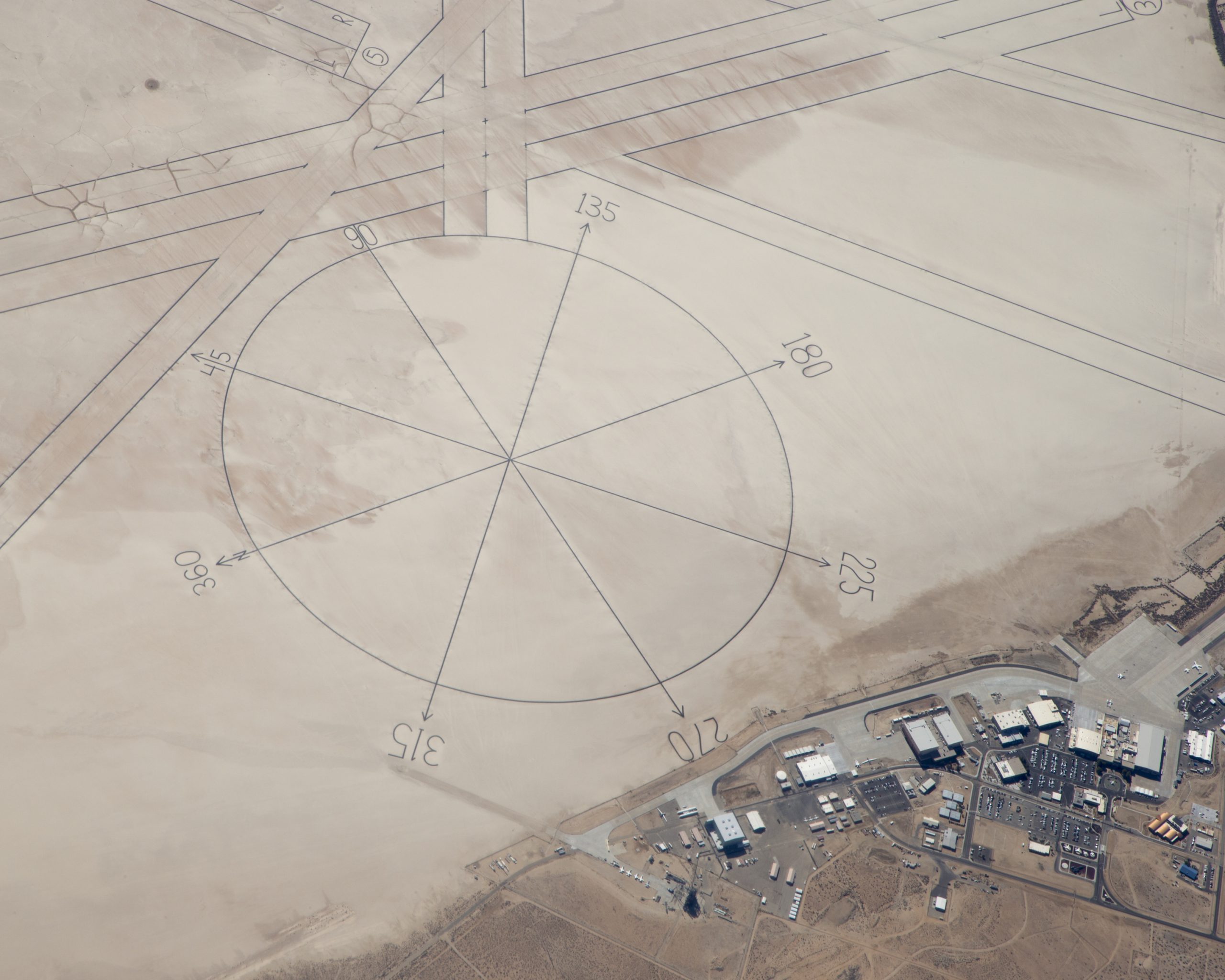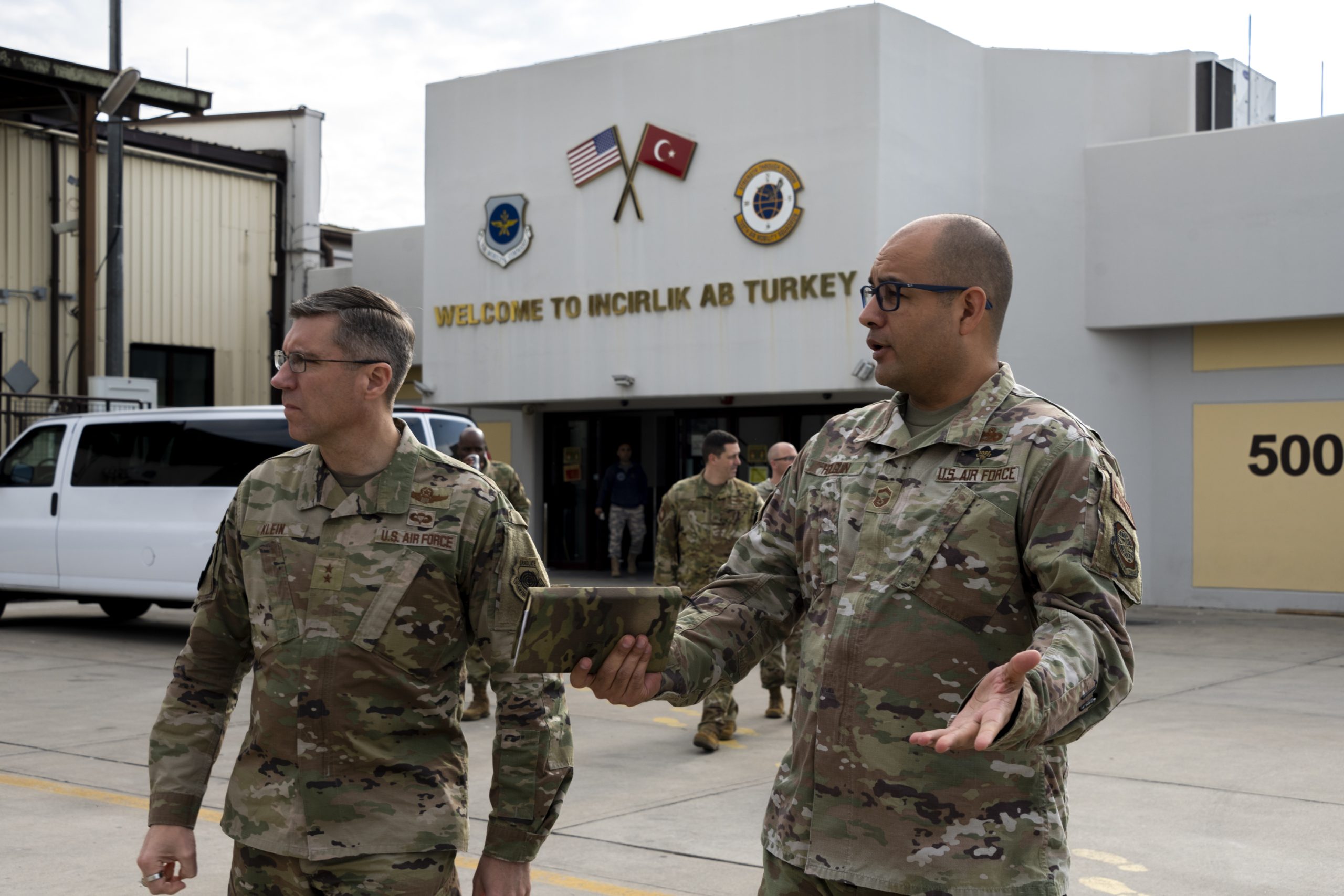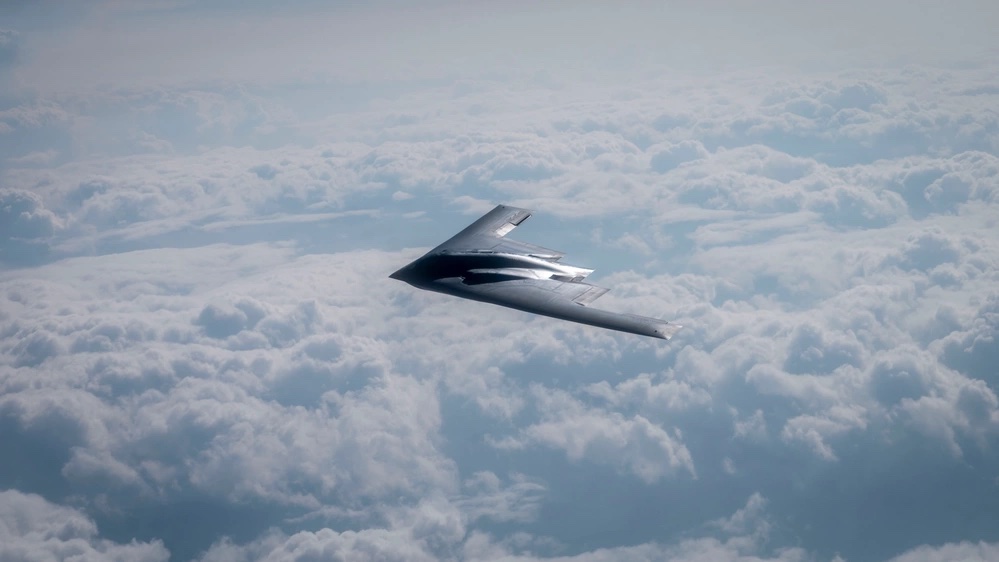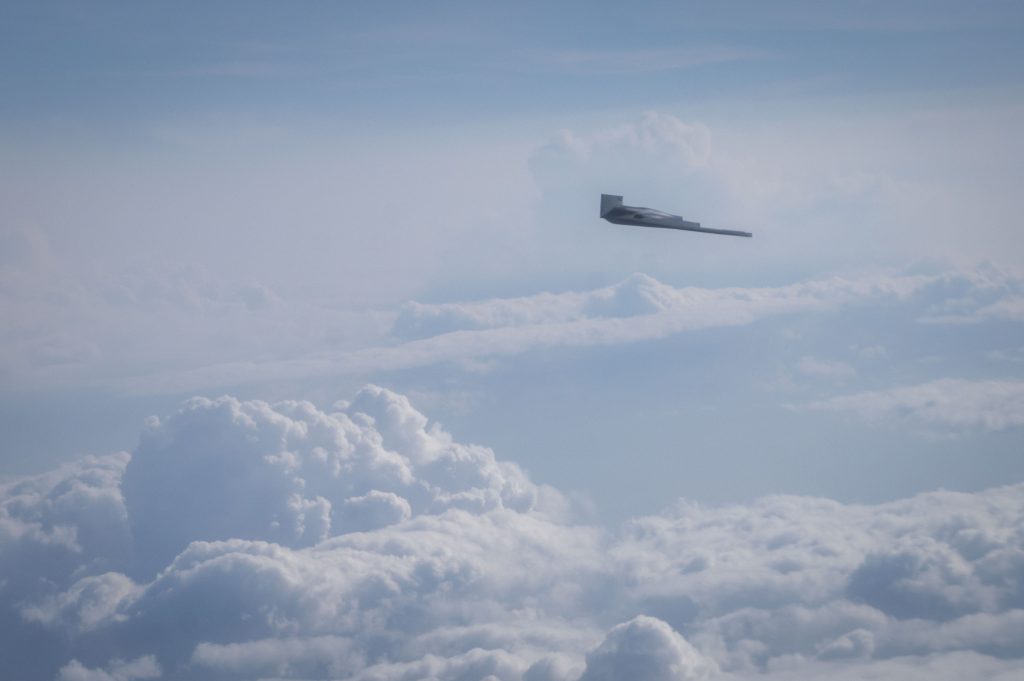The Air Force is investigating a ground emergency involving an F-16 fighter jet that took place at Misawa Air Base, Japan, on Aug. 17. No one was injured in the mishap, and there was no impact to flight operations or commercial flights at Misawa Airport, which shares facilities with the base, a base spokesperson told Air & Space Forces Magazine.
“As we continue to achieve our deterrence mission here at the 35th Fighter Wing, we will prioritize safe flight operations,” said Capt. Josephine Rios, chief of public affairs for the wing. “We will ensure that defending Japan and U.S. interests in the Indo-Pacific region remains our focus as we continue to safely accomplish our mission at Misawa Air Base.”
Photos of the mishap appeared on the Facebook page Air Force amn/nco/snco on Aug. 20. The images show a two-seat F-16D resting precariously on a taxiway on what appears to be a belly-mounted external fuel tank. Rios confirmed the photos depict the emergency in question, though they are from an unofficial source.
The aircraft did not fly the day of the incident. When asked for a damage estimate and whether the F-16 can be returned to service, Rios said the details of the mishap are currently under investigation.
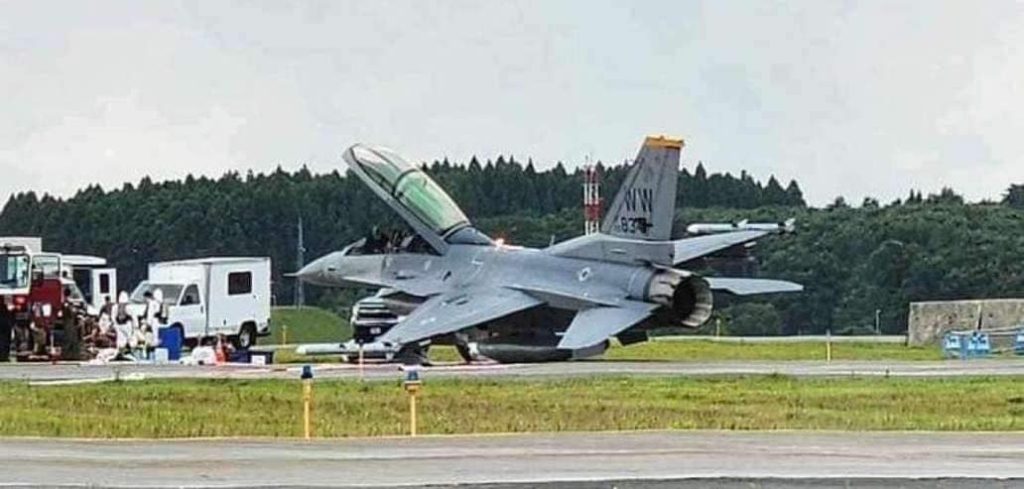
The mishap occurs about three months after an Air Force pilot ejected from an F-16 near Osan Air Base, South Korea, during a routine training sortie. No injuries were reported, though local media outlets broadcasted dramatic videos of the fiery crash. That was the first F-16 incident since March 2022, when an Oklahoma Air National Guard F-16 crashed in western Louisiana. The pilot ejected safely.
The F-16 pilots of the 35th Fighter Wing at Misawa specialize in the suppression and destruction of enemy air defenses, commonly known as ‘Wild Weasel’ missions.
